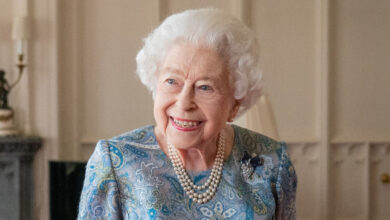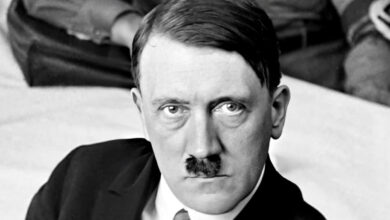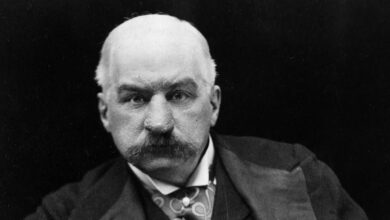“I believe in the dollar. Everything I earn, I spend.” – Joan Crawford
Podcast: Play in new window | Download
Subscribe: Spotify | Amazon Music | Youtube Music | RSS
Joan Crawford Biography
Lucille Fay LeSueur was the birth name of Hollywood actress Joan Crawford when she was born in San Antonio, Texas, USA. She was born on 23 March, although the year is somewhat contested. She claimed herself that she was born in 1908, but according to her daughter Christine she was born in 1904 and lied about her age when she arrived in Hollywood. Lucille was the third of three children born to her parents Thomas E. LeSueur and Anna Bell Johnson. Her sister, Daisy, died before she was born but she also had an elder brother called Hal. Thomas left the family shortly before Lucille’s birth and so her mother re-married. Her step-father, Henry J. Cassin ran the Ramsey Opera House in Lawton, Oklahoma where the family lived and Lucille enjoyed watching the acts performing on the stage.
Lucille’s schooling never progressed much beyond elementary school but she knew from a young age that she wanted to be a dancer. However, an accident with a broken milk bottle left her requiring surgery to repair her damaged foot and so she had 18 months away from her dancing lessons.
After being accused of embezzlement in 1916, Cassin found himself blacklisted in Lawton, even though he had been acquitted by the court, and so he and the family moved to Kansas City, where Lucille was placed in the St. Agnes Academy. There, after her mother and step-father separated, she remained, having to do more work such as cooking and cleaning than actually studying. She then went to Rockingham Academy and in 1922 to Stephens College in Columbia, Missouri but withdrew soon after, realising she wasn’t ready for college.
She started dancing under her birth name in choruses and travelling reviews and was placed in the chorus line for a Broadway show called Innocent Eyes in 1924. At the same time, wanting additional work, she approached Nils Granlund, a publicist for Loews Theatres. He arranged a screen test which was sent by him to Hollywood and on 24 December 1924 he received an offer from MGM for a $75 per week contract. Lucille borrowed $400 for travel expenses and arrived in California on 1 January 1925.
Her first film was Lady of the Night in 1925 in which she was credited still as Lucille LeSueur. She played the body double of the film’s star Norma Shearer and a number of other similarly small parts came her way during the same year. She had been recognised as having the potential to become a star but it was felt that her name sounded fake. So, a competition was arranged to “Name the Star” in Movie Weekly, and Joan Crawford was born.
In 1925 she was cast in Sally, Irene and Mary and this would be the first film in which her true potential as an actress could be seen by the audience. In 1926 she was named as one of the Western Association of Motion Picture Advertisers Baby Stars, along with Fay Wray, Janet Gaynor and Mary Astor and within a few years she started to play the female romantic lead to many of the big name actors of the era including John Gilbert, William Haynes and Tim McCoy. Crawford stated that when she played the scantily-clad female assistant to Lon Chaney Senior’s knife thrower with no arms in 1927’s The Unknown she “became aware for the first time of the difference between standing in front of a camera, and acting”. She credited Chaney with being the single most influential person in her life in terms of what acting is all about.
Her springboard moment came when she played the role of Diana Medford in 1928’s Our Dancing Daughters and a number of hits followed quickly afterwards.
On 3 June 1929, Joan Crawford married Douglas Fairbanks Jr. His parents, Hollywood ‘royal couple’ Douglas Fairbanks and Mary Pickford were opposed to the marriage and would not allow the newlyweds to visit their home for over eight months after the wedding. Crawford and Pickford would go on to despise each other.
It was around this time that the film industry was changing over from the silent era to the talkies after the release of the Jazz Singer in 1927. This was a problem for many stars as they were left unemployable due to their heavy accents and undesirable voices. However, Crawford had seen the problem coming and had spent many hours practising her diction and elocution in an effort to rid herself of her Southern accent. MGM was one of the last studios to transition to sound and Joan Crawford was one of the dozen or so stars to feature in its first talkie, called The Hollywood Review of 1929 in which she sang Got a Feeling for You. Her first feature-length talkie, 1929’s Untamed, followed shortly afterwards.
A number of successful films followed. In 1931, she was cast in five films by MGM, three of them opposite their biggest male star, Clark Gable; Dance, Fools, Dance, Laughing Sinners and Possessed and they proved extremely popular with filmgoers. It was clear that Crawford was now one of the biggest female stars alongside Greta Garbo and Jean Harlow.
In 1932, Crawford received third billing in one of the biggest grossing films of the year, Grand Hotel and she was nervous to be part of a cast of such huge stars such as Greta Garbo and John and Lionel Barrymore. She said she was also a little disappointed at not getting any scenes with the “divine Garbo”. The film was a huge success and won 1932’s Academy Award for best picture. Crawford was placed third in a top ten money-making stars poll that same year and stayed on the list until 1936.
In 1933, she and Fairbanks divorced but this had no effect on her career and she continued to star in hit after hit alongside the likes of Clark Gable and Fred Astaire with whom she starred in Dancing Lady for which she received top billing.
In 1935, Crawford married again, this time to actor Franchot Tone, with whom she built a small theatre at her home where plays were performed for a select few. Joan initially helped to promote Tone’s acting career but he wasn’t interested in becoming a star and soon started to drink and become abusive. Crawford filed for divorce in 1939.
Joan Crawford’s popularity and success continued through the mid 1930’s but towards the end of the decade, this began to decline and her situation wasn’t helped when, in May 1938, the president of the Independent Theatre Owners Association of America penned an open letter which was published in the Independent Film Journal. In the letter, he labelled many of the big stars of the day such as Greta Garbo, Fred Astaire, Katharine Hepburn and Joan Crawford as “Box Office Poison”. He admitted that they had talent, but that their huge salaries were not in proportion to the ticket sales being generated. Crawford continued to make films that received positive reviews by the critics but that were either box office flops or only minor successes.
In 1940, she starred in the eighth and final movie with Clark Gable entitled Strange Cargo and during the same time she adopted her first child, a daughter she called Christine. Two years later, she married her third husband, Philip Terry and they adopted a boy together called Philip Terry Jr, but when the marriage ended in 1946, Joan changed his name to Christopher.
In 1943, her contract with MGM came to an end and on 1 July the same year, she was added to the payroll of Warner Brothers in a contract for three films for a fee of $500,000. In 1945 she played the title role in Mildred Pierce, a part that had been offered to Bette Davis, but she had turned it down. Although there were difficulties between Crawford and the film’s director, Michael Curtiz who had not wanted to work with her, the film was a critical and commercial success and earned Crawford the academy award for best actress. This revived her flagging career and she went on to star in a number of hit films during the late 1940’s and early 1950’s, but after what Crawford called her worst movie, 1952’s This Woman is Dangerous, she asked to be released from her contract at Warner Brothers. The third and last academy award nomination for her came along in late 1952 when she starred in Sudden Fear for RKO Pictures.
In 1947 Crawford adopted two more children, twins called Cindy and Cathy and in 1955, she married her fourth and final husband, Alfred Steele who was an executive at PepsiCo whom she had met at a party in 1950. By the time they became re-acquainted in 1954, he was president of Pepsi-Cola and went on to become Chairman of the Board and CEO. Their marriage came to an end when he died of a heart attack in 1959 and Crawford took his place on the board of directors at Pepsi.
Crawford continued to turn out a steady string of films through the 1950’s and into the 1960’s including 1954’s Johnny Guitar, Female on the Beach and Queen Bee in 1955 and Autumn Leaves in 1956 opposite Cliff Robertson. She also wasn’t too choosy in terms of the size of the role she took at this time either as the death of Alfred Steele had left her almost broke and her popularity had started to decline once again.
In 1962, Crawford starred as Blanche Hudson in Whatever Happened to Baby Jane? alongside Bette Davis in the role of the psychotic Jane. The two stars really didn’t like each other but according to the film’s director Robert Aldrich, they behaved perfectly professionally. However, after filming completed, they each made comments about the other in public which led to a lifelong feud between the pair.
During the later 1960’s Joan Crawford’s career amounted to little more than a few cameo and television appearances. Her final big-screen appearance was in a science fiction horror film called Trog in 1970 and so came to an end a 45-year career in film. The same year she received the Cecil B. DeMille Award at the Golden Globes, which was presented to her by John Wayne. Her final television appearance was in the role of Joan Fairchild in an episode of The Sixth Sense in 1972.
Following an appearance at a party on 23 September 1974, honouring Rosalind Russell who was suffering from breast cancer, a number of unflattering photographs appeared of Crawford in the newspapers the following day. When she saw them, she decided to withdraw from public life and cancelled all public appearances, and so the party would also be her final appearance in public. She declined interviews and rarely left her apartment.
On 8 May 1977, she gave away her dog, a Shih Tzu called Princess Lotus Blossom as she was too weak to care for her. Two days later, Joan Crawford died of a heart attack. In her will she declared that her two eldest children Christina and Christopher should receive nothing, for reasons, she said were known to them. Her two youngest, the twins, Cindy and Cathy received $77,500 each. The remainder of her $2m estate was divided between her favourite charities.
Podcast: Play in new window | Download
Subscribe: Spotify | Amazon Music | Youtube Music | RSS




